Deserts often evoke images of barren landscapes and relentless sun, but beneath the arid surface lies a diverse array of life. Among the flora of these harsh environments, numerous plants possess significant medicinal properties that have been utilized by indigenous cultures for centuries.
This article, remarkable medicinal desert plants that showcase the resilience and adaptability of life in some of the earth’s most challenging climates. Each plant is distinct in its therapeutic qualities, application, and traditional uses.
Pleurisy-root or Butterfly Weed
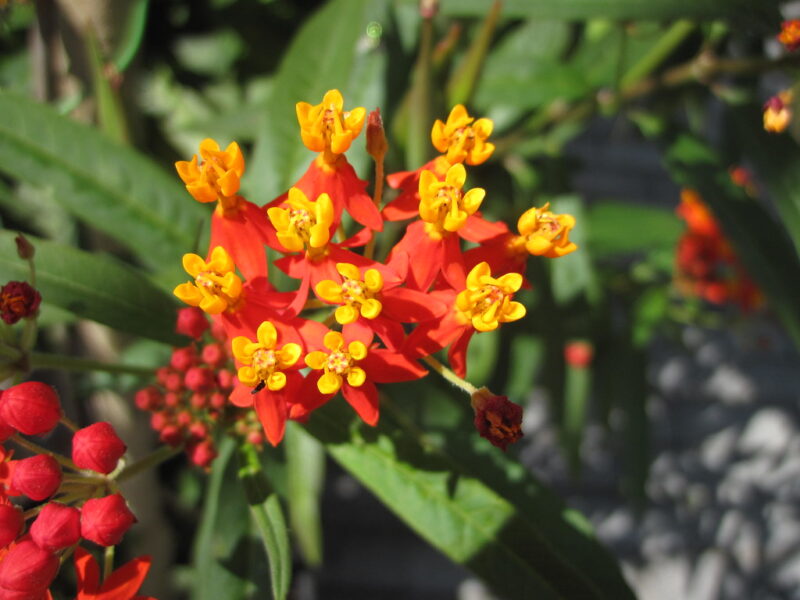
Pleurisy-root, scientifically known as Asclepias tuberosa, is a perennial plant renowned for its striking orange flowers, often attracting butterflies and other pollinators. Traditionally used by Native American tribes, Pleurisy-root earned its name due to its efficacy in treating pleurisy, a painful condition characterized by inflammation of the lining of the lungs.
The root of Butterfly Weed contains compounds that act as expectorants, promoting mucus expulsion and providing relief from respiratory ailments such as colds, bronchitis, and other lung-related issues. Additionally, it has anti-inflammatory properties that may help soothe pain and discomfort. Herbal preparations commonly involve tea made from the dried root or tinctures, emphasizing its versatility as a herbal remedy.
Besides its respiratory benefits, Pleurisy-root has also been recognized for its potential in boosting the immune system. Its use in traditional medicine emphasizes a holistic approach to health, as many Native American cultures regarded this plant not just for its physical healing properties, but also for its role in connecting individuals with nature.
Wild Licorice

Wild Licorice, or Glycyrrhiza lepidota, is a perennial herb native to North America. This lesser-known relative of the more commonly used licorice (Glycyrrhiza glabra) flourishes in dry, well-drained soils often found in desert regions. Wild Licorice holds a special place in traditional herbal medicine, primarily due to its sweet-tasting roots.
The plant contains glycyrrhizin, a compound known for its anti-inflammatory and soothing properties. Traditionally, Wild Licorice has been utilized to alleviate digestive issues, such as heartburn and stomach ulcers. It is also thought to have adaptogenic properties that may help the body cope with stress, making it an excellent herbal ally in today’s fast-paced world.
In addition to its internal uses, Wild Licorice has been employed topically as a poultice for skin irritations and conditions, demonstrating its wide range of applications. The roots can be harvested, dried, and brewed as a tea or made into tinctures, offering various means of consumption depending on the desired effects.
Mormon Tea

Mormon Tea, known scientifically as Ephedra viridis, is a unique plant that thrives in the arid regions of the western United States. This evergreen shrub is particularly notable for its thin, jointed stems and lack of leaves, adapting to conserve water in dry conditions. The plant’s name derives from its historical use by early settlers and Native Americans for brewing tea-like beverages.
Traditionally, the stems of Mormon Tea have been utilized for their stimulant and decongestant properties due to the presence of ephedrine, a compound that can stimulate the respiratory system. As such, it has been employed to relieve symptoms of colds and allergies, assisting with bronchial issues. Additionally, Mormon Tea is often consumed as a herbal remedy for increasing energy levels and enhancing circulation.
However, due to the potential side effects associated with ephedrine, caution is advised when using Mormon Tea for medicinal purposes. It is essential to consult with a healthcare professional before introducing it into one’s regimen, especially for those with pre-existing conditions or who are taking other medications.
Gumweed

Gumweed, or Grindelia fastigiata, is a hardy perennial plant characterized by its distinctive yellow flowers and sticky resinous leaves. Often found in dry, disturbed habitats, Gumweed has a long history of use among Native American tribes for its medicinal properties.
The sticky resin produced by Gumweed contains a variety of compounds that exhibit anti-inflammatory, antiseptic, and expectorant properties. Traditionally, the plant has been utilized to treat respiratory ailments, including coughs, asthma, and bronchitis. An infusion of Gumweed can help soothe irritation in the throat and bronchial passages while promoting mucus expulsion.
Additionally, Gumweed has been used topically to relieve skin irritations, rashes, and insect bites. Its antifungal and antibacterial properties contribute to its effectiveness in addressing various skin issues. The versatility of Gumweed in both respiratory and dermatological applications makes it a valuable plant in traditional herbal medicine.
Prickly Pear Cactus

Prickly Pear Cactus (Opuntia spp.) is an iconic symbol of the desert landscape. This resilient cactus thrives in inhospitable environments, showcasing a unique adaptation strategy with its water-storing pads and vibrant fruits known as tunas. Beyond its iconic appearance, Prickly Pear Cactus offers considerable medicinal benefits.
The pads of the Prickly Pear are not only edible but also packed with nutrients, including vitamins C and B6, fiber, and antioxidants. Traditionally, they have been consumed to help manage blood sugar levels, making them a popular choice among individuals with diabetes. The mucilage found in Prickly Pear is known to support digestive health and can aid in soothing upset stomachs.
Moreover, the fruits of the Prickly Pear are used to make jams, jellies, and juices, adding culinary value alongside their medicinal qualities. Topically, the cactus’s pads are sometimes used to treat skin irritations, burns, and wounds, leveraging their hydrating and anti-inflammatory properties. The multiple uses of Prickly Pear Cactus underscore its importance as both a food source and a medicinal ally.
Mesquite Tree

The Mesquite Tree (Prosopis spp.) is a resilient tree that has adapted beautifully to arid climates, thriving in dry, sandy soils. Mesquite is deeply rooted in various cultures, particularly among Native American tribes, who have recognized its numerous uses over the centuries.
The pods of the Mesquite contain a high level of protein and fiber, making them a valuable food source. When ground into flour, Mesquite flour is rich in nutrients and can be incorporated into a range of recipes. From a medicinal standpoint, the tree’s bark and leaves have been used to create poultices for wounds and skin irritations, demonstrating its antiseptic qualities. Additionally, an infusion made from the pods is believed to help regulate blood sugar levels.
The Mesquite Tree’s capacity to improve soil health through nitrogen fixation makes it an essential component of desert ecosystems. Its multifaceted role in supporting human health and sustaining the environment highlights its significance in traditional and contemporary practices.
Barrel Cactus

The Barrel Cactus (Ferocactus spp.) stands as a prominent figure in the desert habitat, characterized by its cylindrical shape and spines. This cactus not only adds to the unique visual appeal of the desert landscape but is also a critical resource for both wildlife and humans.
Traditionally, Barrel Cactus flesh has been harvested for hydration and food. The pulp contains moisture, making it a vital resource for survival in extreme conditions. Its high water content can help relieve thirst and has been utilized in emergency situations by travelers in arid regions.
Medicinally, the juice extracted from the Barrel Cactus has been recognized for its soothing properties when applied to sunburns and minor burns. It is thought to promote healing and provide relief from irritation. The plant’s ability to thrive in harsh environments while simultaneously offering sustenance and medicinal benefits underscores the value of adaptive desert flora.
Mahonia

Mahonia (Mahonia spp.) is a genus of evergreen shrubs that exhibit vibrant yellow flowers and spiny leaves, commonly found in arid regions. These plants are not only visually captivating but have also been utilized in traditional medicine for their remarkable properties.
The roots and bark of Mahonia contain berberine, an active compound known for its antimicrobial and anti-inflammatory properties. Traditionally, Mahonia has been used to treat infections, digestive disturbances, and skin conditions. Its effectiveness in battling bacterial and fungal infections has led it to be incorporated in various herbal remedies, particularly for wound care and skincare formulations.
Additionally, Mahonia’s bitter taste has historically made it a choice for stimulating appetite and digestion, functioning as a natural tonic. The dual purpose of Mahonia—as both a ornamental plant and a medicinal ally—reflects the interconnectedness of desert flora with human health and well-being.
Manzanita

The Manzanita (Arctostaphylos spp.) is a versatile shrub with signature smooth, reddish-brown bark that thrives in the deserts of North America. This hardy plant has gained recognition not only for its aesthetic appeal but also for its medicinal applications.
Traditionally, Manzanita leaves have been used to brew herbal infusions that serve as a natural remedy for various ailments. Rich in antioxidants, the leaves are believed to have anti-inflammatory properties and have been used to treat respiratory conditions and urinary tract infections. Additionally, the berries produced by the Manzanita are edible and have been utilized in traditional recipes, showcasing the plant’s potential in culinary practices.
In topical applications, Manzanita bark and leaves can be made into poultices to help heal wounds and skin irritations. The versatility and resilience of Manzanita in arid environments highlight the importance of this plant in both traditional and modern medicinal practices.
Aloe Vera

Aloe Vera is perhaps one of the most known medicinal plants that thrive in arid environments. This succulently fleshy plant is celebrated for its soothing properties, especially in treating burns and skin irritations. The gel extracted from its leaves contains anti-inflammatory and antibacterial compounds, making it a popular ingredient in cosmetics and over-the-counter treatments for skin conditions. Additionally, Aloe Vera juice is reputed to aid digestion and boost the immune system, highlighting its versatility and the reasons for its widespread cultivation.
Desert Willow
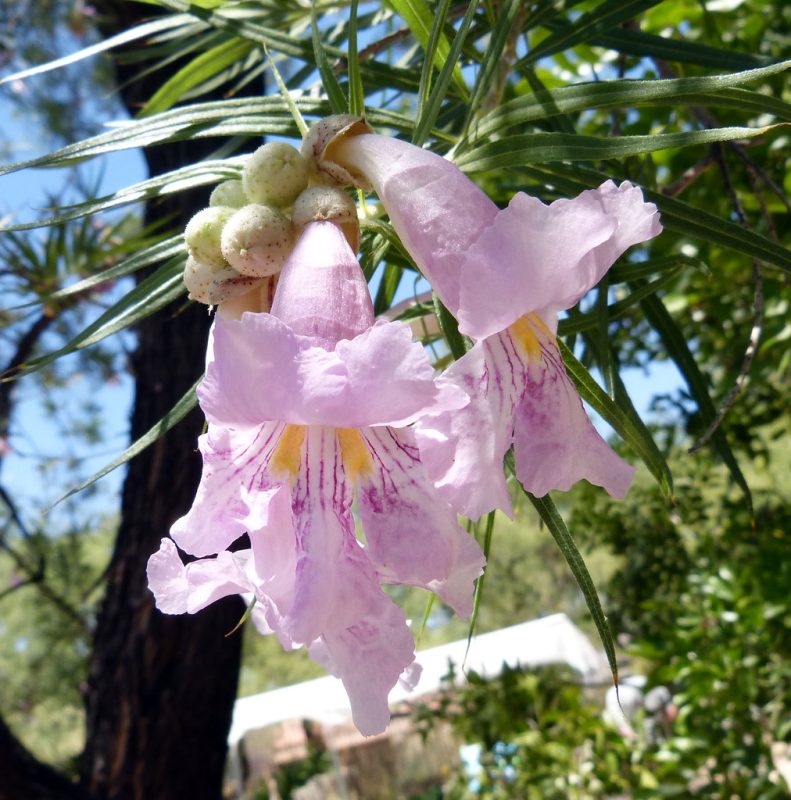
The Desert Willow, or Chilopsis linearis, is not only admired for its beautiful, trumpet-shaped flowers but also for its medicinal bark. Indigenous peoples have historically made infusions from the bark to treat respiratory issues and fever. The tree’s flowers are also known to attract pollinators, further contributing to local ecosystems. When brewed as a tea, Desert Willow has been traditionally used to alleviate symptoms of colds and coughs, showcasing the plant’s potential as a natural remedy.
Sagebrush

Sagebrush (Artemisia tridentata) is a hardy plant native to the western United States that has been embraced for its medicinal properties. Traditionally, the leaves have been used in herbal teas for their anti-inflammatory effects and ability to relieve digestive issues. Moreover, the aromatic properties of Sagebrush make it a valuable ingredient in smudging rituals, believed to purify spaces and foster healing from emotional disturbances. Its resilience in harsh conditions is a testament to its adaptability and significance.
Catclaw Acacia

Named for its sharp thorns, Catclaw Acacia (Acacia greggii) is more than just a formidable plant; it holds medicinal potential. Indigenous peoples have used the bark and leaves to make infusions for treating various ailments, including headaches and digestive complaints. The plant’s gum can also be chewed or used to relieve sore throats. Due to its nitrogen-fixing capabilities, it not only serves medicinal purposes but also supports the soil health of desert ecosystems, making it a vital component of its habitat.
Devils Claw

Known as Harpagophytum procumbens, Devils Claw thrives in the arid environments of Southern Africa. This plant’s tubers have been used for centuries to treat pain and inflammation. Rich in harpagosides, compounds known for their analgesic properties, Devils Claw is a natural alternative for those seeking relief from arthritis and other inflammatory conditions. Its roots are typically prepared as a tea or tincture, providing a therapeutic option for many who wish to avoid conventional medications.
Yucca

The Yucca plant, particularly Yucca schidigera, is known not only for its majestic appearance but also for its medicinal applications. Rich in saponins, Yucca is often utilized for its anti-inflammatory properties and its potential to lower cholesterol levels. The plant’s roots are also consumed in various forms, including capsules or powders, which are believed to aid digestion and enhance nutrient absorption. Its multiple uses in health supplements underscore the adaptability of this desert hardy plant.
Jojoba

Jojoba (Simmondsia chinensis) is not just another desert plant; it holds a unique position due to its oil, which closely resembles human sebum. Jojoba oil is known for its moisturizing properties and is commonly used in cosmetics and skin care products, making it an essential ingredient in natural beauty routines. Traditional uses of the plant also include its application for treating dry skin and hair, highlighting its versatility and effectiveness in promoting skin health.
Ghost Plant

Named for its pale, waxy appearance, the Ghost Plant (Monotropa uniflora) is a unique example of a plant that thrives in the desert without chlorophyll. This fascinating plant has been historically used by indigenous communities for medicinal purposes, particularly in treating gastrointestinal discomfort. Its ability to absorb nutrients from its surroundings, particularly the fungi it associates with, illustrates the plant’s adaptation strategies, allowing it to thrive in otherwise inhospitable conditions.
Indian Paintbrush

Indian Paintbrush (Castilleja spp.) is not just a visual spectacle in desert landscapes; it also has medicinal applications. Traditionally, various Native American tribes utilized this plant to create poultices for wounds or as an infusion for flu symptoms. With its distinctive colors, Indian Paintbrush not only enriches the biodiversity of arid regions but also serves as a testament to how beauty and utility can coexist in nature.
Horehound

Horehound (Marrubium vulgare) is typically found growing in dry, sunny areas and has been historically used as a remedy for respiratory conditions. The plant’s leaves are rich in compounds that help to soothe coughs and act as a natural expectorant. Horehound tea has been enjoyed for generations as a remedy to relieve bronchial irritation, showcasing the plant’s value in traditional medicine practices.
Borage

While more commonly associated with wetter climates, Borage (Borago officinalis) can also thrive in arid environments. The leaves and flowers of this plant are known for their soothing properties and are traditionally used in salads or teas. Borage oil, extracted from its seeds, contains gamma-linolenic acid (GLA), which has anti-inflammatory effects and may help alleviate symptoms of premenstrual syndrome (PMS). The plant’s adaptability highlights its importance in various culinary and medicinal practices.
White Sage
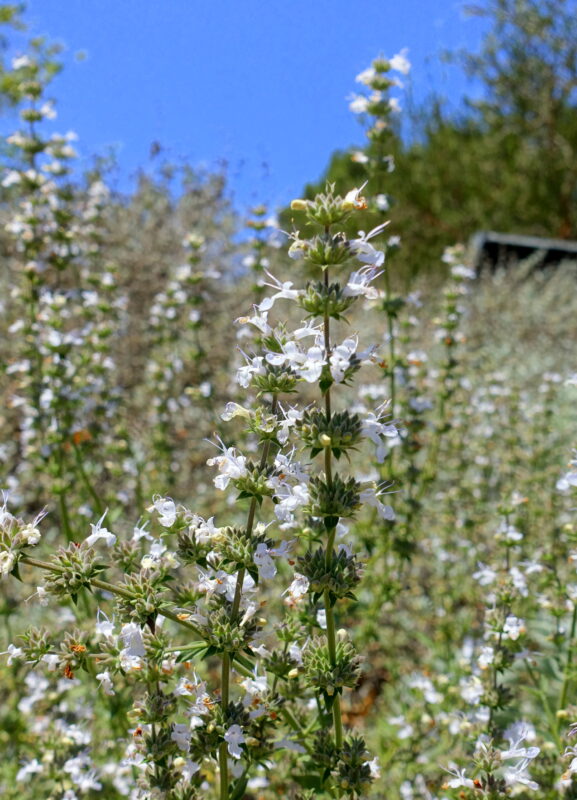
White Sage (Salvia apiana) is revered for both its spiritual significance and therapeutic properties. Traditionally used in smudging, the smoke is believed to purify spaces and promote healing. Beyond its ceremonial purposes, White Sage has been used as a remedy for digestive issues and sore throats. Its anti-inflammatory properties contribute to its popularity in herbal medicine, affirming its role in both health and cultural practices.
Sand Verbena
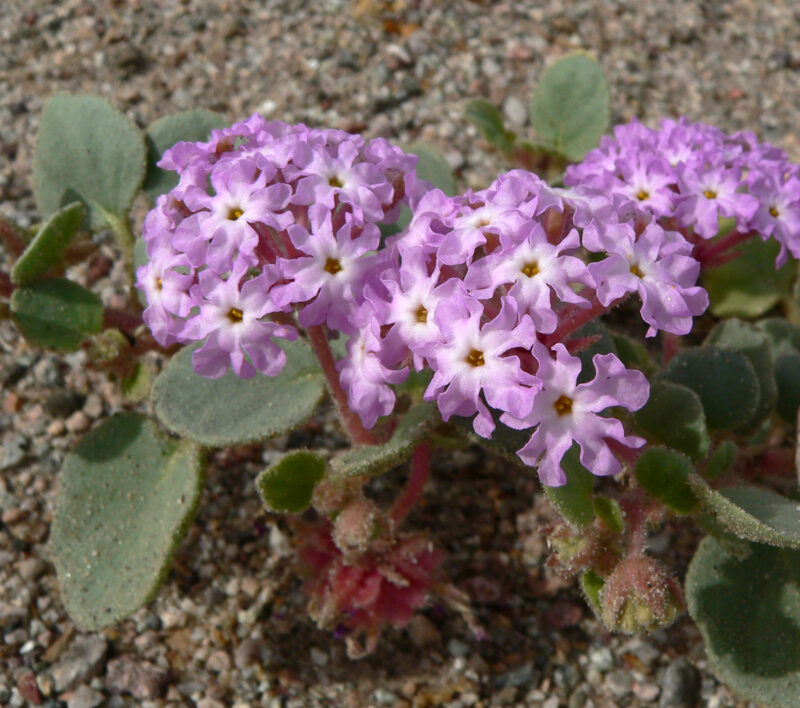
Sand Verbena (Abronia umbellata) flourishes in sandy soils and is celebrated for its vibrant blooms. Traditionally, it has been utilized by indigenous peoples to treat various ailments, including headaches and other minor pains. Sand Verbena can be brewed as a tea, yielding soothing effects that underscore its medicinal attributes. Additionally, its role in attracting pollinators illustrates its importance in maintaining healthy desert ecosystems.
Ocotillo

The Ocotillo (Fouquieria splendens) is a striking desert plant characterized by its tall, spindly branches. Traditionally, it has been used for its medicinal properties, particularly in treating skin ailments and infections. An infusion of Ocotillo leaves may provide relief from fevers and body aches. Its unique morphology and adaptive strategies allow it to thrive in challenging environments, making this plant both a visual and medicinal gem of the desert landscape.
Yarrow
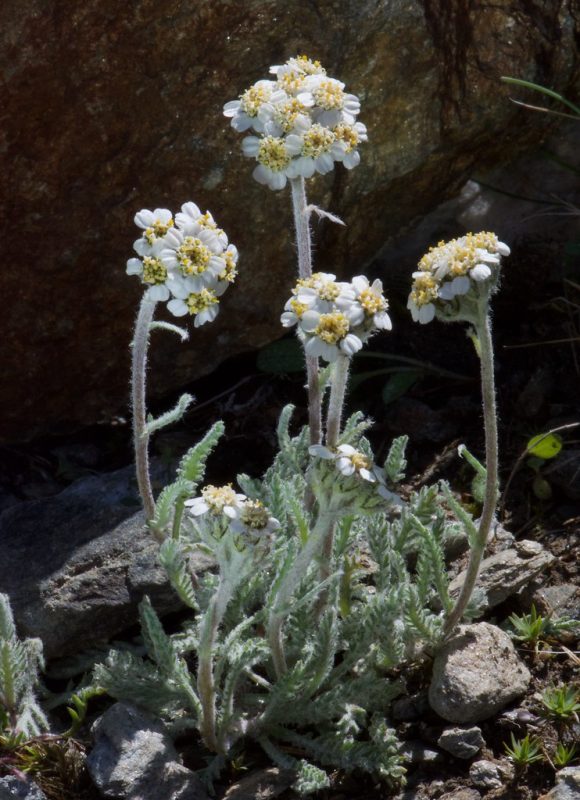
Yarrow (Achillea millefolium) is a herb that has found a place in both traditional and modern medicine. While often associated with cooler climates, it can adapt to desert conditions. Traditionally, Yarrow has been considered a powerful herb for wound healing, often applied topically to cuts and scrapes to promote blood clotting. Its anti-inflammatory and antimicrobial properties enhance its utility within the realm of herbal remedies, highlighting the plant’s relevance throughout the ages.
Tansy

Though often found in various climates, Tansy (Tanacetum vulgare) is known for its tolerance to arid conditions. Its leaves have been utilized for centuries to combat various ailments, including fevers and digestive issues. Tansy contains compounds that may offer protective properties against certain health conditions, underscoring its value in traditional and herbal medicine practices, especially in cultures that recognize the plant’s potential.
Tamala

Tamala (Laurus nobilis), known for its aromatic leaves, is a versatile plant that thrives in warmer climates. Traditionally, the leaves have been utilized as a spice but also have medicinal value, particularly in easing digestive issues and promoting overall health. Its culinary and therapeutic uses underscore its importance in both indigenous practices and modern cooking, demonstrating how desert plants can enhance well-being in various aspects of life.





